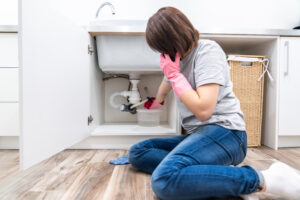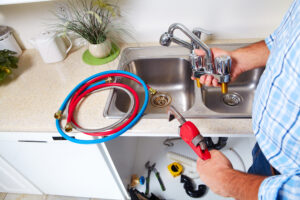The Colorado weather comprises extremes such as biting winter cold presented by the plummeting temperatures that go as low as -20⁰C.
Consequently, frozen water pipes is among the many challenges that Coloradans grapple with during the unforgiving winter cold weather.
As temperatures drop below freezing point, water in pipes expands to form ice, leading to outages and breakages that attract significantly expensive cost bills.
This article looks at the clever tips for preventing and battling frozen water pipes in Colorado homes.
Shield Pipes in High-Risk Areas
Water conduits in exposed exteriors and other under-insulated areas including the basement, under-spaces, and loft can get frozen from the freezing air finding its way indoors.

Did your pipes freeze? Call us today!
Similarly, inadequate sealing like cracks, spaces, and worn weatherstripping can culminate in pipe freezing around windows. To combat this challenge, use foam material or attach heating tape for exposed conduits in basements, under spaces, lofts, and outer walls. Most critically, pay special care to conduits near windows, vents, and unheated garages.
Seal Spaces and Crevices
Gaps, crevices, and unsealed openings on entries and exits like windows or doors allow heat drafts that go on to inflate heating expenses. While the effects of heat drafts through such openings often go overlooked in friendly summer and fall seasons, the situation gets out of hand in winter. Besides skyrocketing indoor heating expenses due to the biting temperatures, you will have to grapple with frozen water pipes because of the extremely cold air finding its way indoors. To address this issue, inspect for openings and crevices on your sidings and seal them during fall. Ensure all spaces around entry and exit routes are tightly sealed with new weatherstripping, or better still, install energy-efficient windows.
Maintain Constant Temperatures
Constant warmth is critical for combating frozen pipes, considering the extremely cold air outdoors. The only remedy for that is to calibrate the thermostat to 55⁰F, even when occupants are far from home. Since some thermostats sometimes go above the desired settings, consider installing a smart thermostat that allows for remote adjustment of the settings. Consistent warmth helps prevent freezing.
Let Taps Drip
The Colorado winter weather sometimes forces some homeowners to travel in a bid to escape the biting cold. What such homeowners may not realize is that while they are away, their water pipes may freeze and rupture, leading to grave structural damage. This is given that going for too long without using the conduits makes the water still and vulnerable to freezing. Consider letting the faucets drip a little if you are around since moving water does not freeze. Alternatively, they can install smart faucets so that they can control the dripping remotely while away from home
Plan for Power Interruptions
Power interruptions are not much of a big deal during other seasons. However, they can pose a grave inconvenience since indoor heating is crucial for survival. Besides disrupting comfortable living, power outages can also be a contributor to frozen water pipes. To prevent such scenarios, consider having an alternative heating strategy like a backup generator.
Open Cupboard Doors
If there is one set of water conduits that is often vulnerable to freezing issues are conduits that navigate under or inside the cabinetry and sinks. This is explained by the fact that they are hidden and do not utilize the benefits of indoor heating. To ensure heat is distributed even to this set of pipes and prevent them from freezing issues, consider opening the cabinet doors.
Use Pipe Heating Cables
Another clever hack that proves to provide reliable solutions to frozen pipes is the use of heating cables. The system consists of an electrically heated power cable that is attached to the conduits. Heat from the cable is transferred to the conduit, and the water passing through it, removing the possibility of freezing. For accuracy and convenience, consider automatic temperature-controlled heating cables to achieve your home’s safety from a frozen plumbing system even without you being around.
Winterize Outdoor Plumbing
If left undrained, outdoor plumbing fixtures such as hoses and exterior spigots are exposed to freezing during the cold winter. To protect them against freezing and consequential damage, detach and empty them before insulating them with foam covers.
Even with all the above proactive antifreeze strategies, regular inspections are necessary for early detection and immediate remedies. The fundamental insights of a professional plumber are crucial for preventing these challenges and remedying them since they can quickly escalate to serious problems such as pipe bursts and leaks that attract costly repair bills.




